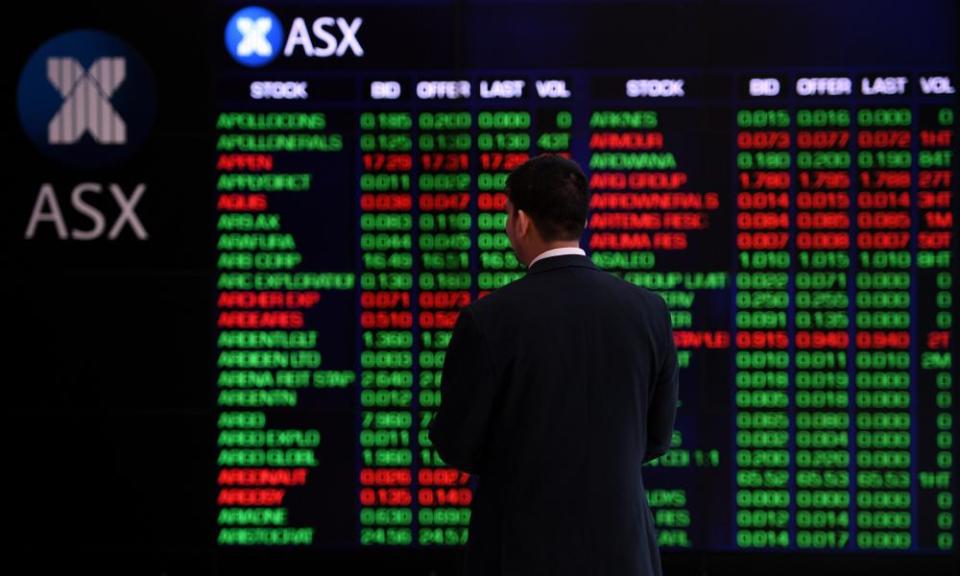The optimism of Australia's investors for the future has shot through the roof

In the run up to the release of the latest GDP figures on Wednesday, investors have become very upbeat about the prospects for the economy. But such optimism has more to do with how bad things were last year, than with the current situation, even as companies continue to record extremely strong profits growth.
On Wednesday the December quarter GDP figures will reveal how the economy is recovering from the abrupt stop in production last year. And while the unemployment rate remains some 1.2% points above where it was a year ago, there will no doubt be lots of reports about how the economy is firmly out of recession.
Certainly for many companies this is the case.
The latest business indicators released on Monday showed a fall in profits in the last three months of the year, but this was expected because those months saw a reduction in the level of jobkeeper payments, which are counted as revenue for companies.
Despite this drop, 2020 saw profits in most industries grow faster than they did throughout the past decade:
Graph not displaying? Click here
And it would be easy to suggest that all of the jobkeeper payments are the reason for the big increase in profits, but the latest reports from companies shows that many companies – especially those in the retail industry – have had a boom year.
The boom of course did not flow through to workers.
As a general rule profit growth aligns with wages growth. Because profits are more erratic than wages, a three year average of profit growth historically moves nicely in line with wages growth.
Not now:
Graph not displaying? Click here
But such a disconnect does not worry investors. For while the unemployment remains well above pre-pandemic levels, investor optimism for the future has in the past month shot through the roof.
One common gauge for economic outlook is the rates of government bond yields.
In essence, the bond yield (or interest rate) for five and 10 years bonds is a good indicator for where investors think the economy is headed – if they are rising then investors think interest rates will rise in the future, which is a sign that the economy is expected to improve.
Last year the gap between the 10 and five year bond yield and two and three year bonds was quite narrow. This suggested little hope for improvement over the long-term.
But by the start of this year, the 10 year bond yield had increased well above the more short-term bonds, and then over the past year the 10 year bond yield rose 0.7%pts:
Graph not displaying? Click here
The gap between the five year and two year bond yield is now wider than it has been since April 2014 – suggesting that the market is more positive that things are getting better now than they have been since then:
Graph not displaying? Click here
You can understand why there is such belief given Australia’s reliance on commodities and the recent increase in the prices of coal, LNG and – especially – iron ore:
Graph not displaying? Click here
That price growth suggests that Australia’s mining industry remains solid and investors believe in time interest rates will rise as inflation picks up.
But it also just means that they think things have improved from where they were – ie compared to last year’s once in a hundred year collapse in production.
And the reality is that while investors expect rates to increase, the five and 10 year bond yields remains at levels that would have been record lows prior to the pandemic:
Graph not displaying? Click here
And the same goes for inflation expectations.
There has been some whispers that inflation expectations are on the rise, and that as a result maybe the Reserve Bank will need to increase the rate before its current expectation of at least three years away.
It is clear that there has been some increase in the expectations of inflation – especially since last March:
Graph not displaying? Click here
But even still, the market inflation expectations is historically low.
Given the strong correlation between inflation expectations of the government bond yields and actual inflation we remain a long, long way from anywhere that would have the Reserve Bank thinking about raising the cash rate:
Graph not displaying? Click here
Yes, the outlook is much better than it was this time a year ago. But you would hope so! A year ago the pandemic was taking hold around the world and hopes of a vaccine seemed the stuff of dreams.
But while the outlook has improved, it is so only compared to where we were. Compared to where thing were prior to the pandemic – when the economy was merely struggling along – the outlook remains much as it was, even while company profits surge.

 Yahoo Finance
Yahoo Finance 